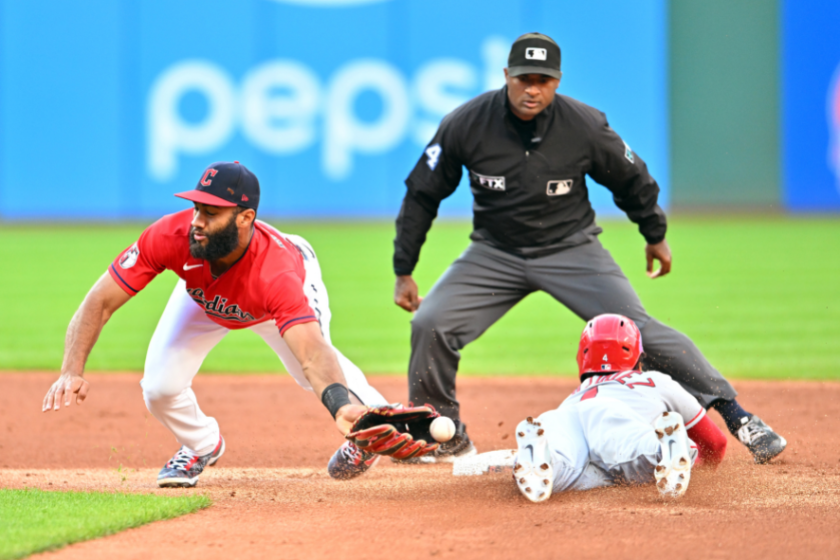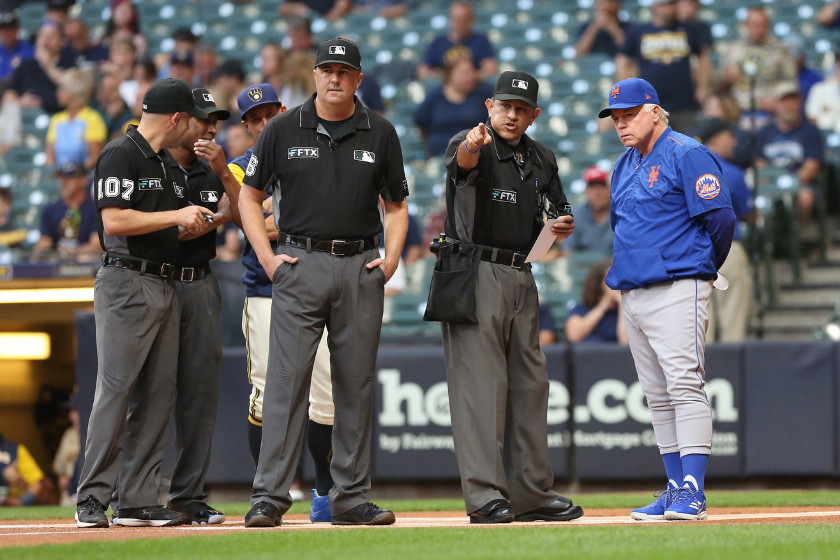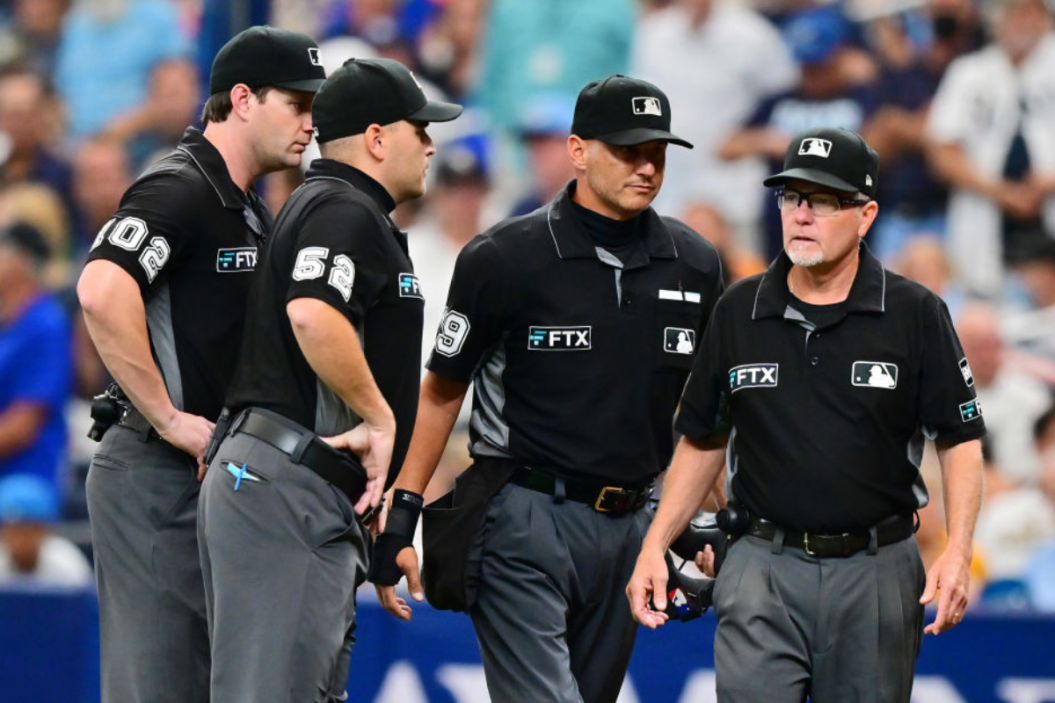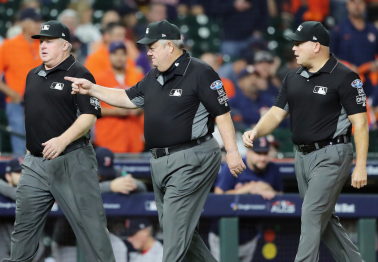Working as a Major League Baseball umpire sounds like one of the worst jobs in the world. No job in professional sports comes with the immense pressure and requires quick decision-making skills than the men who call balls and strikes and decide whether runners are safe or out.
Not only do MLB umpires have to worry about making the same costly blunder Jim Joyce did to ruin Armando Galarraga's perfect game in 2010, but they must be concerned with the threat of being replaced by robot umpires and being constantly ridiculed by instant replay review.
Still, there are perks to calling MLB games. Traveling the country and working inside one of the 30 beautiful and historic MLB stadiums like New York's Yankee Stadium and San Francisco's Oracle Park are pretty attractive duties. I mean, imagine going to the World Series because it's your job.
Baseball umpires must endure a long road of gaining minor league experience before earning the call-up to the big leagues. According to MLB.com, there are only 70 Major League umpires working in 17 crews of four plus two national rovers. Umpiring isn't easy, but it's worth it for those who reach the top level.
Let's dig into how one becomes an MLB umpire and earns as much as hundreds of thousands of dollars calling games.
How To Become an MLB Umpire
THE most Major League Umpires
THE longest standing Umpire School
THE most prestigious Umpire School in the WorldIf you want to umpire in the Major Leagues, then THE Wendelstedt Umpire School is THE only school you should consider.
Major League Training from THE First Pitch! pic.twitter.com/USqwlxIAJo
— Wendelstedt Umpire School (@HWumpireschool) February 17, 2020
One does not just decide they want to be a MLB umpire.
First, you must meet the physical requirements: 20/20 vision, reasonable body weight, quick reflexes and good coordination. Other professional sports officials have to go through more rigorous physical tests, but it's nice to see baseball hitting the important things like 20/20 vision, especially for those calling games in The Show.
Most start out with some sort of high school baseball or travel baseball experience. The first step, however, is to enroll in one of the nation's two minor-league approved umpiring schools: the Harry Wendelstedt Umpire School or the Minor League Baseball Umpire Training Academy in Florida.
It'll cost you about $2,500 to enroll in one of these schools. The caveat is that only the top 15 or 20 percent of these umpire hopefuls are handpicked to partake in the Minor League Baseball Advanced Course in February. Only a select few from that group are then assigned to call games in rookie ball or Class A short-season leagues. From there, minor league umpires must work their way through the system like players do.
Some minor league umpires must spend a decade as a home plate umpire in the lower ranks before sniffing a Major League game. According to MiLB.com, these umpires make as little as $2,000 per month and as much as $3,900 per month in Triple A, which is still only about $20,000 per year considering Class AAA seasons run for less than half a year.
According to Bleacher Report, minor league umps also receive a per diem as much as $66 per day.
How Much Do MLB Umpires Make?

Photo by Jason Miller/Getty Images
RELATED: Minor League Baseball Players Earn Less Than School Janitors
Professional baseball umpires don't make quite as much as the MLB player minimum salary, but they're still well off financially.
According to Career Trend, the starting rookie umpire salary is $150,000 and the more experienced umpires and senior umpires (like Joe West) rake in as much as $450,000 per year. Crew chiefs, as you might expect, also cash in. That may seem like a lot for a regular season that lasts only six months long, but it's reasonable after factoring in Spring Training, the postseason and All-Star games.
The perks for professional umpires are impressive, too.
MLB pays for their first-class flights. They get four weeks of vacation during the regular season, which is a lot until you realize how mentally and physically draining the job is. Umpires can also earn more money by working in the postseason if they're selected for it.
How MLB Umpire Salaries Compare to Other Leagues
#MLB #umpire crew from AL Wild Card game
?@MLB pic.twitter.com/U2wwC0jGGj— UmpsCare ?? (@UmpsCare) October 6, 2021
According to Bleacher Report, MLB umpires make more per year than officiating crew members from the NFL and NHL. The average big league umpire makes $235,000, while the average salary for NFL referees is $188,322. The highest-paid refs are in the NBA, where the average is $375,000.
However, divide the amount of games MLB umpires must work and that number looks less appealing. NFL referees haul in more than $11,000 per game worked while MLB's officials take home less than $1,500 per game.
That's not a half-bad paycheck for traveling the United States and working baseball games.
And if that doesn't help an umpire make ends meet, they can always do what Joe West did: start a career as a country singer. Yes, we're serious.
MLB Umpire Salary 2022

Photo by Larry Radloff/Icon Sportswire via Getty Images
While plans to start the 2020 MLB season amidst the coronavirus pandemic were discussed, MLB and the umpires' union agreed to a 30 percent salary reduction for the 2020 season, according to USA Today Sports' Bob Nightengale.
Some of the league's baseball players weren't happy with the MLB and MLBPA's discussions about their own pay cuts, but at least umps agreed to get America's ballparks back open. It's unclear exactly how much specific umpires are making during the 2022 season, but it's likely not a reduced salary.
Playoff games like the American League and National League Division Series kicked off in October on ESPN, FOX and TBS, and you better believe baseball fans were curious about the salary range of the umpires they disagree with.
Do MLB umpires deserve these big bucks?
This post was originally published on March 3, 2020 but has been republished during the 2022 MLB season.

